
Unpiecing the pieces, Alisha Jain
Allied Studies, Rupali Gupte
Bricoleuses/Bricoleurs: Bricolage as Method
Bricoleuses and Bricoleurs: Dhruv Sachala, Alisha Jain, Grishma Mehta, Tanishqa Rodrigues, Jatan Gala, Radhika Malekar, Arkdev Bhattacharya, Madhura Patil, Abhilasha Patil, Drishti Desai, Priyanshi Bagadia, Stuti Shah, Gauri Sarang, Simran Panchal, Saloni Vora, Pranay Kotadia, Kalpita Salvi
In the ‘The Savage Mind’, Claude Levi Strauss uses the word bricolage to describe characteristic patterns of mythological thought. He compares the working of the engineer and the bricoleur. The Bricoleur who is the “savage mind” works with their hands in devious ways, puts preexisting things together in new ways, and makes do with whatever is at hand. As opposed to the bricoleur is the engineer, who is the ‘scientific mind’, the true craftsperson who deals with projects in their entirety, considering the availability of materials, and creating new tools. Levi Strauss argues that mythology works more like the Bricoleur whereas modern western rationality works more like the engineer. He suggests that the engineer creates a totalizing system, which has a degree of permanence whereas the Bricoleur is more spontaneous and creates fragmented, more temporal, impermanent systems.
In this studio, we drew on the imaginary of the Bricoleuse/Bricoleur to build the contours of a deep practice that engages in reading, acquaintance with works of art and architecture and making. Five groups explored five tropes through which they engaged with the idea of the Bricoleuse/Bricoleur. We explored different figures who embodied the qualities of the Bricoleuse/Bricoleur and corresponding modes of thinking and making. The course explored the fluid relationships between art and architecture without categorizing them as such. The intention was to engage with the idea of a long duree practice, where the process is as engaging as the outcome. The course collapsed the boundaries between art/architectural theory and studio, between reading, thinking and making. As we mined through treasure troves of ideas and works, the participants were encouraged to collect references that would become their companions through the journey and to articulate one question around which they produced a work of art/architecture.
Methodologically, the first step was to understand the self with its extended perimeter. From this perimeter, one had to locate a micro practice, that involved the working of an energetic self who has a trip and kick in life that produces a longue duree engagement. From here participants wrote short semi-fictional stories locating the contours of this practice, its geography, political economy and experiential dimensions. This micro practice is in Michel De Certeau’s words a tactical practice (DeCerteau, 1988), an enunciation that bypasses logics of capital, power and the measurable world. The stories are supported by drawing annotations that Roland Barthes calls ‘third meaning’ (Taussig, 2011). These stories are then gently teased into producing spatial interventions that appropriate the various scales of architecture from drawing, to object, to space, anything that can be inhabited and occupied both physically and mentally.
Following are some of the tropes of the Bricoleuse/Bricoleur explored:
1. Quilt-maker: Repair
In 1960s China, during the cultural revolution, while the country was being cleansed of all preexisting art forms and embarking on a new world, a group of Chinese women were making textile paintings from scraps of shoe soles, pieces of cloth from shirt collars etc to gift to each other. Ge-ba is literally Textile Paintings. They were re-pairing material not to mend existing things but to mend the social life that was disrupted through the violence of modernity. While acquainting ourselves with works such as this and a collection of readings around the art and philosophy of repair, we build a series of works which contribute to Repair as practice.

The Missionary, Grishma Shah


Memories of Withering, Dhruv Sachala

A Home of Fragments, Jatan Gala
2. Pack rat: Lists
Pack rats are large bushy tailed rodents. But the term is generally used to describe people who collect things indiscriminately. Mobilising the metaphor of the pack rat, this group mines texts and works around the idea of indiscriminate collections. In his book ‘Infinity of lists, an illustrated essay’ Umberto Eco (2009) takes us through lists from the pragmatic to the poetic from Homer to Salvador Dali and from James Joyce to Ravel’s Bolera. As Pack rats we look at the definitions and philosophical underpinnings of lists, their obsession, excesses as we wade through several works in art and architecture on the idea of lists.
 The East Indian Cookery Book, Tanishqa Rodrigues
The East Indian Cookery Book, Tanishqa Rodrigues
3. Bard: Sublime
Bards, minstrel poets often traveled from one destination to another. In many cases they were story tellers and chroniclers, at other times they were blistering satirists. Their works were poetic, sublime and transcendental. The Pardhan tribe of central India, served as bards for another tribe the Gonds, for whom they sang glorifying epics, which fuse together partly imaginary histories of the lost Gond kingdom (Jain, 2018). The artist Jangarh Singh Shyam, mentored by J. Swaminathan from Bharat Bhavan belonged to the Pardhan community. J. Swaminathan validated the works of Jangarh Singh as contemporary art alongside the urban works of other modern artists at Bharat Bhavan. Through a mythological rendering of the forest, Jangarh Singh Shyam evoked another transcendental way of inhabiting the world. From the writings of Edmund Burke to Kant, the Sublime evokes a transcendental space in the poetic imagination. This may be the space of desire, aspirations, urges. The studio wanders through literature around the poetic, the sublime, the oneiric and the philosophical through works of art and architecture. The figure of the Bard is mobilized as a point of departure for the studio.

Book Garden, Madhura Patil
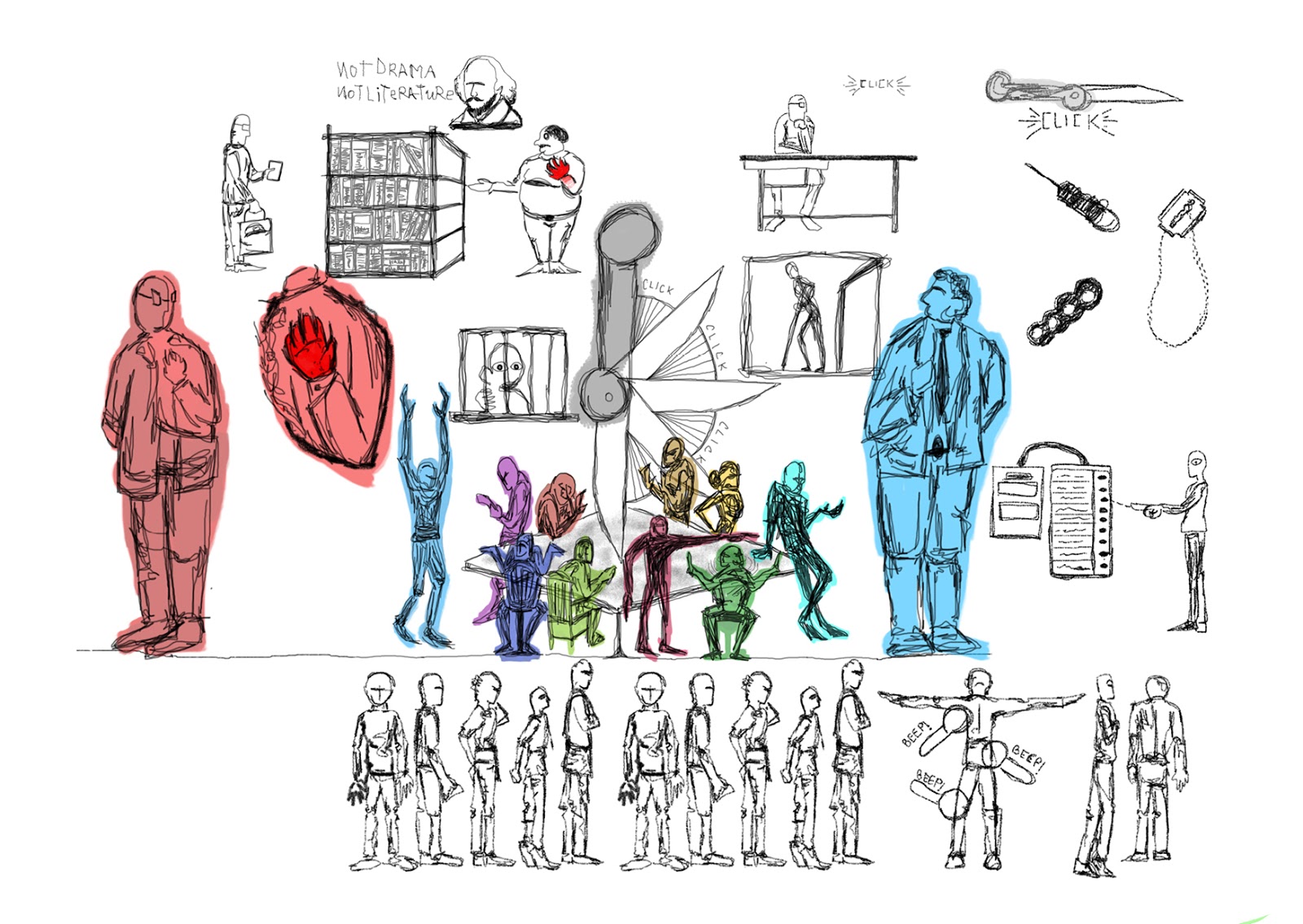 Theatre, Library, Knicknacks, Arkdev Bhattacharya
Theatre, Library, Knicknacks, Arkdev Bhattacharya
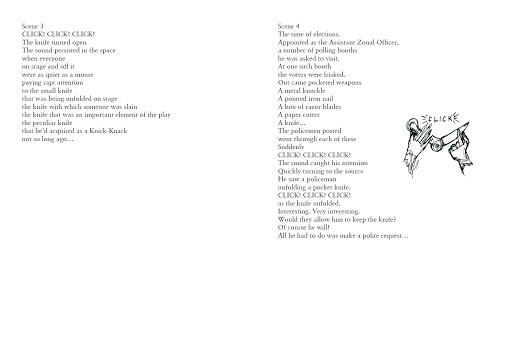

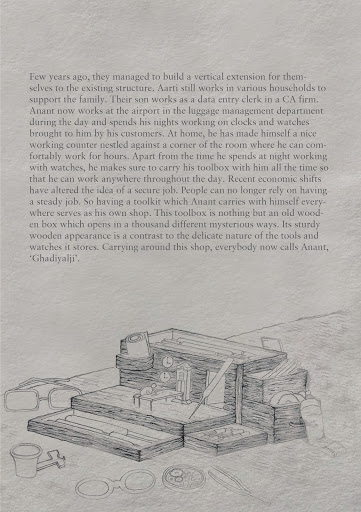
 Imaginary Characters and Parallel Worlds, Simran Panchal
Imaginary Characters and Parallel Worlds, Simran Panchal
4. Jester: Absurd
The figure of the jester has been deployed in several texts as a device of humour or subversion to change the status quo of situations. Tenali Rama was the jester at the court of Krishnadevaraya, who through his wit solved challenging problems of the kingdom. The jester often employs the tools of the absurd, in the words of the art critic Victor Schlovsky in his seminal text ‘Art as Technique’, to defamiliarize the context so as to make things apparent by their inversion. The jester uses several tools such as parody, irony and subversion to challenge situations. In the 50s and 60s, the ‘Theatre of the Absurd’ was deployed to point to the absurdities of the human condition. The studio introduces readers to several texts and works of art and architecture around the figure of the jester to fuel the design studio around it.
Childlike Parallel Universe, Saloni Vora

5. Detective: Investigative
The figure of the detective /Spy is a metaphor around the ideas of stealth, secrecy, curiosity and the investigative. In the Urban Studies project at SEA a novel collectively written in an Allied Design Studio, ‘Just Another Day’ a murder mystery is mobilized to speak of the contemporary city of Mumbai. The detective in this scenario is a fixer who navigates the emergent spaces of urbanity as the story unfolds. Architectural research has deployed investigation to piece together complex facts to create new understandings. The studio will constitute a collective reading of texts, works of art and architecture around the figure of the detective to create provocations for a design studio.
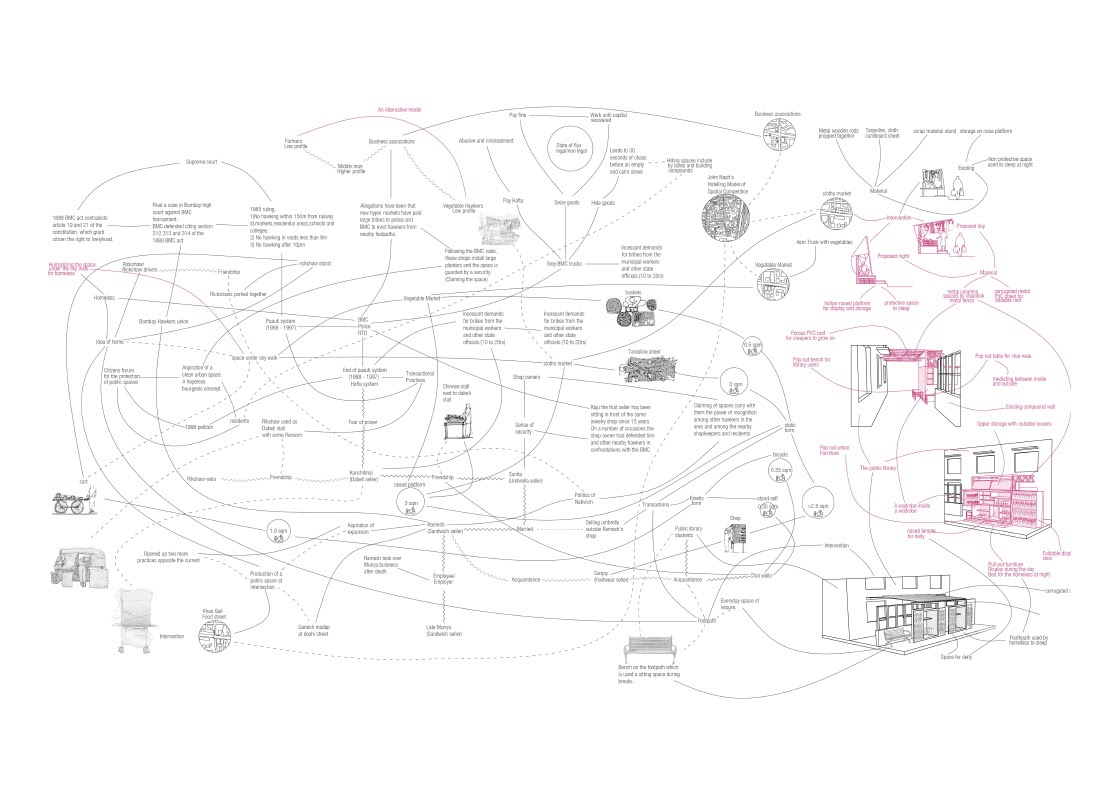
The Secret of the Past, An Enquiry into the Urban Form of Doshi Street, Pranay Kotadia
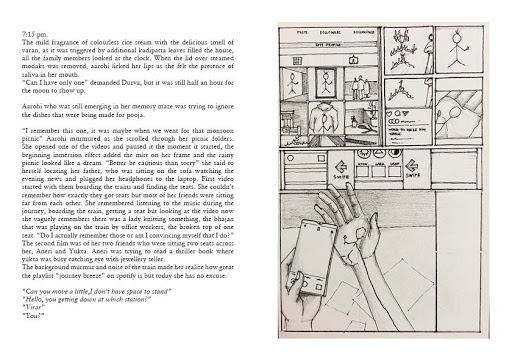
The Idols of Everyday, Kalpita Salvi